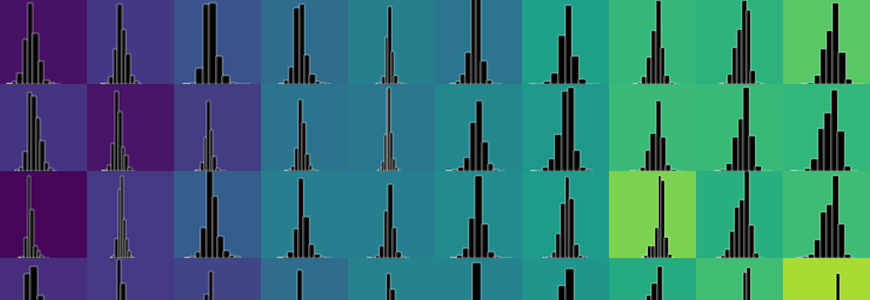By Rob Mitchum // September 26, 2016
What do economics, health care, urban science, sociology, real estate, social networks, policy and many other subjects share in common? The answer is space — not of the astronomical variety, but in terms of geography, proximity, and other location-based measures. Because of this ubiquity, spatial analytics hold great promise for unlocking discoveries from data across many fields. But through most of the history of statistics, traditional methods based on time have dominated analysis.
The arrival of the Center for Spatial Data Science (CSDS) at the University of Chicago promises to close that gap and advance research in all corners of campus. Led by Luc Anselin, the Stein-Freiler Distinguished Service Professor in Sociology and the College, and housed within both the Computation Institute and the Division of Social Sciences, CSDS arrives perfectly placed to educate and collaborate across campus using spatial analytics.
“It’s very much serendipity,” Anselin said. “When somebody comes to us with an interesting question or interesting data, we see what we can contribute, and sometimes that leads to new ways of thinking about theory and methods, new software, and training.”
Spatial analytics reveals effects and factors that more traditional statistics might miss. For example, housing prices are heavily affected by surrounding properties and amenities, and health disparities can be driven by geographic factors such as access to public transportation and safe parks. Time-based statistics or arbitrary geographic categories such as census tracts can easily overlook these interactions, distorting attempts to measure or predict the impact of policies and interventions.
Spatial analysis started in geography, in great part through the pioneering work of Brian Berry who directed the then Center for Urban Studies at the University of Chicago in the 1960s and early 1970s. However, the spatial analytical approach quickly spread to other fields such as epidemiology (to examine the spread of disease) and ecology (to look at the dynamics of ecosystems). Today, the methods are applied to any kind of data where “location and interaction matter,” Anselin said, going beyond geographic relationships to social networks, brain scans, and other less traditional landscapes.
Anselin’s group, previously at the University of Illinois at Urbana-Champaign and Arizona State University, has been an academic leader in this expansion of spatial analysis to new fields. Beyond research, the group has made these methods more broadly accessible through the development of computational tools, led by the popular, open-source GeoDa software. With nearly 200,000 users, GeoDa has become a standard tool for both using and teaching spatial analysis.
“We’ve always emphasized computation and software development as a way to disseminate the techniques,” Anselin said. “GeoDa was developed to expose non-geographers to spatial analytical techniques and make them easy to carry out by having a very user friendly interface.”
Since its arrival at UChicago this summer, CSDS has quickly established promising collaborations that cut across departmental boundaries. With Chapin Hall, whose research and policy staff work side-by-side with public and private agency decision makers to better target resources, CSDS is exploring how to integrate spatial analysis into child welfare-related projects. Related work with Nicole Marwell of the School of Social Service Administration will examine the intersection of social science and data science using longitudinal data Marwell and colleagues collected on social service contracts in New York City.
Potential projects with University of Chicago Medicine researchers would examine the spatial factors driving repeated hospitalization and adverse health outcomes, or the effect of block parties on violence in surrounding neighborhoods. CSDS researchers are collaborating with the Computation Institute (Director Ian Foster and Center for Data Science and Public Policy director Rayid Ghani), the Harris School (Deputy Dean and Professor Dan Black), Chapin Hall (Bob Goerge), and NYU Professor Julia Lane to add a spatial analytics perspective to their Executive Program in Applied Data Analytics. In addition, collaboration potential is being explored with a number of other scholars, including Mike Franklin from Computer Science, Kate Cagney of the Population Research Institute, and James Evans of KnowledgeLab, among others.
“We’re excited about joining an ecosystem of people who are interested in data science and spatial analytics,” said Julia Koschinsky, CSDS research director. “There is an infrastructure that we can plug into that doesn’t make us a lone voice in this universe.”

Additionally, CSDS has already established connections with local city government. Marynia Kolak, a PhD candidate and research specialist with the center, is working with the Chicago Department of Public Health to build a “spatial decision support system” that allows public health officials and community organizations to share data and use spatial analytics for monitoring community health needs, outcomes, and accessibility. The framework dynamically updates with real-time data from a variety of sources and puts advanced spatial analytic methods in the background behind visualizations, so that non-experts can use them in their decisions.
The promise of partnerships and new collaborations such as these drew CSDS to UChicago, Anselin said. Other factors included the opportunity to teach spatial analytics in programs such as the new Masters in Computational Social Science, and an overall academic environment that increasingly emphasizes advanced data-driven approaches in multiple disciplines.
“We fit right in,” Anselin said. “With the genuine focus on computation and a renewed interest in formal spatial analysis, this is a great opportunity for us to get a lot of leverage out of what we do.”

